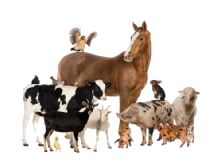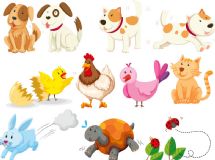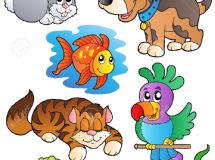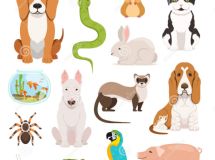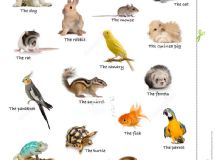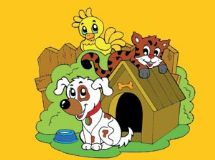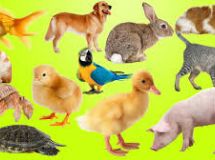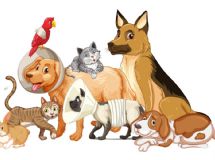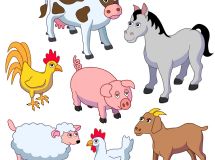Dogs learn very quickly.
There is one rule: If a dog finds an action rewarding, he is much more likely to repeat it and keep repeating it.
Almost everything your dog does will be based on this.
What is rewarding? Anything he enjoys.
This could include gaining attention, getting a treat, playing a game, running around, meeting other people and dogs, going to sleep: it all depends on what he wants at the time.
Therefore, as long as we remember the rule, training becomes much easier.
When teaching, we could try to make our dogs do something.
The old type of training involved pulling and pushing our dogs.
The new methods of motivational training are based on making our dogs want to do it.
There are many advantages.
What it is that your dog likes best? Most rewards that we can give our dogs fall into one of four basic categories.
Food This is probably the most useful group.
It does help if you have a greedy dog, but it is not essential.
Find your dog's favorite food and divide it into tiny sections.
If you are using meat or cheese, cut it into pieces roughly the size of our little finger nail.
Each of these is one reward.
Ensure that whatever you give to your dog is safe for him in small quantities.
Human chocolate is not a good idea as it can be toxic for dogs.
Meat, cheese, bread and at treats are all possibilities.
Many commercial dog treats far too large to be used in training.
Think of other food your dog enjoys that can be used as lesser reward.
For example, he may enjoy pieces of one of he dried foods or dog biscuits.
These can usually be used ii larger quantities, thus saving the best treats for teaching v or difficult exercises.
Adjust your dog's food accordingly.
We do not want him become overweight or receive an unbalanced diet.
Therefore, set aside a handful of his dried food for use as treats during the day.
At first, you will use lots of rewards, but as time goes on, these should be reduced, as your dog will begin to understand what it is you want him to do.
Games Games are a good way of increasing motivation.
They are a good way of developing the bond that will help training, for example, encouraging your dog to come when you call him.
However, they are not so good for teaching the exercises where your dog does not move, like sitting and staying.
Your dog is then more likely to move in anticipation of his game.
Therefore, use games for training only when appropriate.
Find out what treats your dog likes best, and what works most effectively in different situations.
Use lots of treats when training, but ensure that he still has a well balanced diet.
Attention Your attention is a big reward for your dog, but often it is not as powerful as the motivation to do something else, like going to play with another dog.
Because we love our dogs and enjoy their company, we tend to give them lots of free attention.
We talk to them and fuss them just for being there.
There is nothing wrong with this, but do not expect your dog to work for the reward that he knows he can but in conjunction with other rewards, such as food, especially when teaching your dog something new or difficult.
Access to something he wants Imagine your dog wants to go out into the yard.
He scratches at the door, you get up and open it.
Your dog has learned that scratching at the door means you are more likely to open it and he will repeat this action.
Is that what you want? You can use these situations to help teach him to respond to you.
Before opening the door, ask him to sit if you have taught him the word.
When he does, praise him and open the door.
This way, your dog learns that he can learn the things he wants through good behaviour.
There is one rule: If a dog finds an action rewarding, he is much more likely to repeat it and keep repeating it.
Almost everything your dog does will be based on this.
What is rewarding? Anything he enjoys.
This could include gaining attention, getting a treat, playing a game, running around, meeting other people and dogs, going to sleep: it all depends on what he wants at the time.
Therefore, as long as we remember the rule, training becomes much easier.
When teaching, we could try to make our dogs do something.
The old type of training involved pulling and pushing our dogs.
The new methods of motivational training are based on making our dogs want to do it.
There are many advantages.
- It is much more fun for dogs and owners.
- As it does not rely on strength or brute force, everyone, even the very young, can get results this way
- It uses the dog's natural instincts.
- It is usually quicker, as the dog understands the owner and wants to learn.
What it is that your dog likes best? Most rewards that we can give our dogs fall into one of four basic categories.
Food This is probably the most useful group.
It does help if you have a greedy dog, but it is not essential.
Find your dog's favorite food and divide it into tiny sections.
If you are using meat or cheese, cut it into pieces roughly the size of our little finger nail.
Each of these is one reward.
Ensure that whatever you give to your dog is safe for him in small quantities.
Human chocolate is not a good idea as it can be toxic for dogs.
Meat, cheese, bread and at treats are all possibilities.
Many commercial dog treats far too large to be used in training.
Think of other food your dog enjoys that can be used as lesser reward.
For example, he may enjoy pieces of one of he dried foods or dog biscuits.
These can usually be used ii larger quantities, thus saving the best treats for teaching v or difficult exercises.
Adjust your dog's food accordingly.
We do not want him become overweight or receive an unbalanced diet.
Therefore, set aside a handful of his dried food for use as treats during the day.
At first, you will use lots of rewards, but as time goes on, these should be reduced, as your dog will begin to understand what it is you want him to do.
Games Games are a good way of increasing motivation.
They are a good way of developing the bond that will help training, for example, encouraging your dog to come when you call him.
However, they are not so good for teaching the exercises where your dog does not move, like sitting and staying.
Your dog is then more likely to move in anticipation of his game.
Therefore, use games for training only when appropriate.
Find out what treats your dog likes best, and what works most effectively in different situations.
Use lots of treats when training, but ensure that he still has a well balanced diet.
Attention Your attention is a big reward for your dog, but often it is not as powerful as the motivation to do something else, like going to play with another dog.
Because we love our dogs and enjoy their company, we tend to give them lots of free attention.
We talk to them and fuss them just for being there.
There is nothing wrong with this, but do not expect your dog to work for the reward that he knows he can but in conjunction with other rewards, such as food, especially when teaching your dog something new or difficult.
Access to something he wants Imagine your dog wants to go out into the yard.
He scratches at the door, you get up and open it.
Your dog has learned that scratching at the door means you are more likely to open it and he will repeat this action.
Is that what you want? You can use these situations to help teach him to respond to you.
Before opening the door, ask him to sit if you have taught him the word.
When he does, praise him and open the door.
This way, your dog learns that he can learn the things he wants through good behaviour.
SHARE

